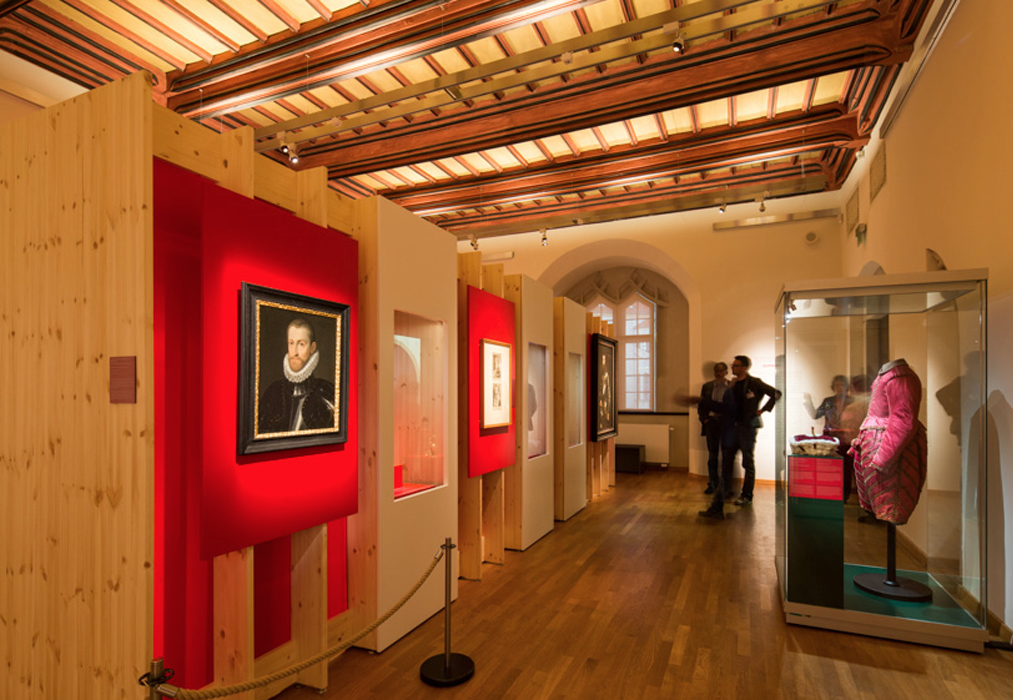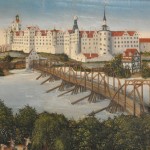The King of Germany alias the Holy-Roman Emperor was since the end of the 12th century elected by a select college of German princes – the Electors or in German, “Kurfürsten”. To understand the political events behind the Reformation it is necessary to know about this institution
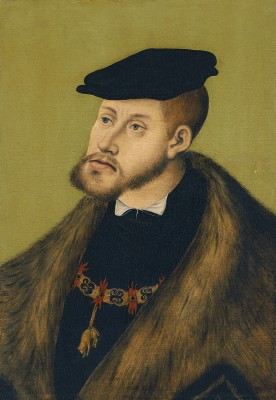
The exact history behind the ‘Kurfürstenkollegium” or the electoral college responsible for the election of the King of Germany and the Holy-Roman emperor is naturally disputed. However, after 1356 the exact principles became enshrined in the so-called “Golden Bull”, which clearly defined the composition and the principles behind the actual conferment of the royal title and rule over the empire, which at this point happened without papal confirmation. The Golden Bull, which was given by the emperor, Charles IV, clearly outlined the composition as well as the inner workings of the elections.
Members of the college were the three Archbishops of Mainz, Trier and Cologne, the king of Bohemia, the Count Palatine of the Rhine, the Duke of Saxony and the Margrave of Brandenburg. When voting the Archbishop of Trier voted first, then followed the Archbishop of Cologne, the King of Bohemia, the Count Palatine of the Rhine, the Duke of Saxony and the Margrave of Brandenburg. The Archbishop of Mainz, who presided over the College, voted last. His job was to make the final decision in case the votes were equally divided.
To belong to this select group of electors entailed a series of privileges: immunity, the right to mint coins, the right to impose and collect customs, to tax the Jews and the right to prohibit people to plead their case in front of the Emperor (privilegium de non evocando).
While being elected as Archbishop was a prerequisite to enter the Electoral College, the right was inherited in the male line by the secular princes. Both groups were however intimately related. First of all intermarriage between the ruling families was very common. Second, the Archbishops were more often than not elected amongst the “second sons” of past or present secular electors or minor noble lineages belonging to and dependant upon the social network of the electors.
The primary role of the Electors was of course to confer the royal and imperial title, whenever the present incumbent died. However, the Electors were also obliged to act as councillors to the Emperor in connection with the regular diets. Primarily, though it was all about status and privileges. It stands to reason that bribery played an important part, whenever an election was on the agenda. This was especially the case in 1519, when Charles V was elected. This set the stage for a weakened Imperial rule and the success of the future reformation.
The Electors around 1517 – 1521
(The electors are listed according to allegiance in the election of Charles V in 1519)
Archbishop of Mainz – Albert of Brandenburg (1490 -1545). Archbishop from 1514 and Cardinal from 1518.
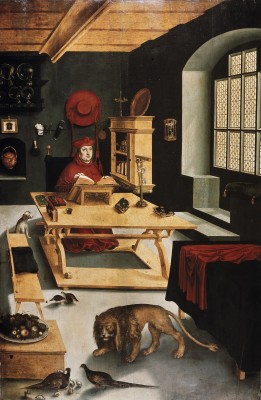
Albert of Brandenburg was the younger son of the Margrave of Brandenburg and thus destined to enhance the political influence of his brother, Joakim I Nestor from the line of the Hohenzollern. He became Prince-Elector in 1499 at the death of his father.
In 1514 Joakim I was active in securing the very influential Archbishopric of Mainz for his brother, Albert, who had at first been appointed to the sees of Magdeburg and Halberstadt. As accumulation of sees were forbidden by canon-law and Albert not old enough to be appointed as Archbishop of Mainz, when the see fell vacant in 1514, the acquisition of this prestigious and influential position demanded the payment of vast bribes to the Pope and his curia; the money was lent by the Fuggers (a enormously rich family of merchants from Augsburg). To assist in the recovery of this debt the Archbishop was expected to set up the business of selling indulgencies. The proceeds from these sales went to cover the amortisation and servicing of the debts to the Fuggers, a cut to the Holy See and to cover the investment of the Hohenzollerns. In practice the sale of indulgencies was commissioned to petty tradesmen appointed or at least approved by the Fuggers.
However, his Saxon neighbour and co-elector Frederick the Wise had also tried to secure this rich plum, but without luck. He had thus amassed debts of his own, but with no apparent future income in sight. Accordingly he forbade the sale of indulgencies in his electorate and allowed Martin Luther to preach against the practice.
Albert was known to be somewhat liberal and when Martin Luther sent his famous 95 articles by post to his Archbishop, he probably did not envision the storm they raised. Cash-strapped as the family of Hohenzollerns were, Albert, however, did not consider it opportune to support the ideas of the reformer in spe. Instead he forwarded them to Rome, which took immediate measures to protect their important money-machine.
As long as he lived, Albert was prone to both pay bribes and receive them. In 1519 both Francis I and Charles V paid hefty sums to secure his vote. As late as in 1541 he received 500.000 florins as payment from the people of Magdeburg and Halberstadt, who wished to achieve religious freedom.
As he grew older he became less prone to try and mediate between the warring religious factions. But he was never as staunch a supporter of Roman Catholicism as his father (See below).
The Margrave of Brandenburg – Joachim I Nestor (1484 -1535)
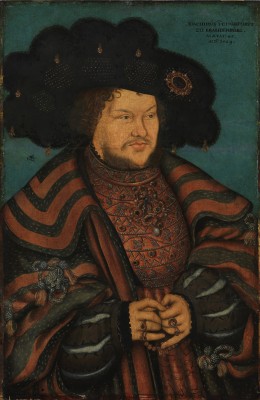
Joachim I Nestor has gone down in history as a vile and autocratic ruler, bent on securing his absolutist rule in a region, marred by feuds and periodic plundering gangs of lesser nobles. In 1506 he had 70 such nobles hanged. He is also known to have been active in persecuting Jews, of which more than 30 were burned in Berlin in 1510. He was a staunch Catholic and vehemently sought to uproot any Evangelical heretics, he might encounter, including his own wife, who was the sister of the (former) Danish King, Christian II (both devoted Lutherans). In 1519 he was first a supporter of the cause of Francis I; nevertheless he ended up casting his vote in favour of Charles V.
It was not until 1577 that Brandenburg took on the Lutheran confession.
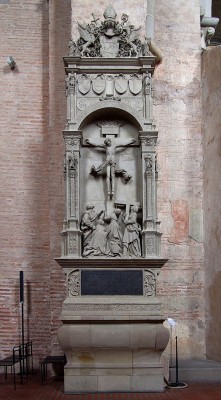
The Archbishop of Trier – Richard von Greiffenklau zu Vollrads
Richard von Greiffenklau zu Vollrads was the 4th son of a noble family, which were administrators of an important part of the land belonging to the core of the domains of the Archbishop of Mainz. Richard was early on intended for a clerical career, which secured him a post as Canon in Mainz in the beginning of the 16th century. In 1511 he was elected as Archbishop to Trier. At the election in 1519 in Frankfurt he voted – heavily bribed – for the French king, Francis I. In 1521 in Worms he was heavily engaged on the anti-reformational site of the diet, even though he offered protection to Luther (which was declined).
The Archbishop of Cologne – Hermann von Wied (1477 -1552). Archbishop from 1515
Hermann von Wied was the 5th son of the count of Wied-Runkel, whose land belonged to the core of the region linked to the domain of the Archbishop of both Trier and Cologne and received as fief of the Palatine Count (another of the Electors). He supported the claims of Charles V in 1519, and was heavily opposed to Martin Luther and the reformation in 1521. Over time his sympathies for the Evangelical reformation became more pronounced. In 1547 he joined the Evangelical side, which caused him to be deposed by the emperor and excommunicated by Pope Paul III. At that point he resigned his office and retired to Wied.
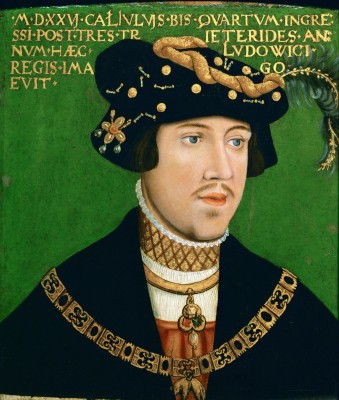
The King of Bohemia – Louis II of Böhmen and Hungary
Until 1471 George of Poděbrady was king of Bohemia. He was a Hussite and would presumably have been positive towards the reformation. However, after his death the Bohemian estates chose a Polish prince Ladislaus Jagellion as king. When he died in 1516 his son, Louis II of Hungary (1506 – 1526) inherited the electorship. At the age of ten, he was considered a minor. As such he was adopted by the Holy Roman Emperor Maximilian I. When he died, Louis was raised by his cousin George, Margrave of Brandenburg-Ansbach. He died at the age of twenty in the disastrous battle of Mohàcs, where the Hungarians fought the invasion of the Turks. Married to a daughter of Queen Joanna and King Philip I of Castile and brother-in-law to Charles V, he was a natural supporter of his imperial election of Charles and a staunch Catholic. After his death the crown went to the emperor’s younger brother, Ferdinand I.
The Count Palatine of the Rhine – Louis V (1478 – 1544)
The Counts Palatine were Imperial Vicars in the territories, which were under Frankish law (Franconia, Swabia and the Rhineland). When Ludwig V inherited the title as Elector in 1508, his realm was considerably reduced. In 1519 he – paid handsomely – voted for Charles V. He was personally predisposed towards the Evangelicals, but held himself back (more inclined to further order and peace than reformation). He died without legitimate issue and it was not until 1544 that the reformation was officially accepted in the Palatine by his brother, Frederick; he was, however, outlawed by the Emperor, after which he submitted. Finally, in 1556 his heir introduced the Lutheran reformation, but the denomination turned Calvinistic at the ascendance of his successor, Frederic III.
The Duke of Saxony – Friedrich the Wise (1463 – 1525)
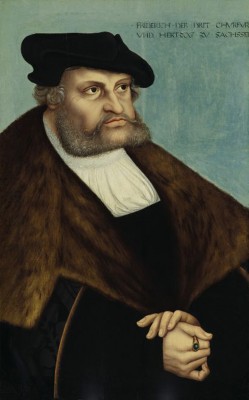
In 1486 at the age of twenty-three he inherited the Electorate from his father plus extensive lands, which he governed together with his brother, John the Steadfast, who took over in 1525. Frederick the Wise was financially very wealthy due to the fact that he had an important income from the silver and iron-mines in the region. At an early age, he was known as an extremely devout Catholic. In 1493 he went on a pilgrimage to Jerusalem, where he was knighted on the Holy Grave together with a number of cousins and friends from the German high nobility. This religious fervour also resulted in the massive collection of relics. With more than 19.000 pieces, it is believed to have been the third largest private collection at that time. In 1509, Cranach the Elder produced an inventory with block prints. The collection was kept at the Chapel in the Castle in Wittenberg.
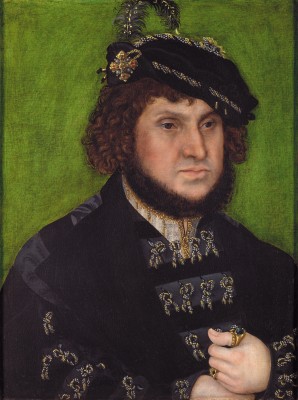
He is known to have been politically engaged in expanding the political influence of the German princes at the expense of the emperor. This became obvious at the negotiations in 1519 leading up to the election of Charles the V. Friedrich was a contender, but backed out after having secured a charter, which heavily curtailed the influence of the new Emperor on the reigns of the German princes.
It is believed, this was one of the reasons why he was able to actively protect Martin Luther up until, during and after the diet in Worms in 1521; and which allowed him to further his reformational work. At stake for the Elector from Saxony was the drain on the finances, which seeped to Rome in the form of the Peter’s Pence as well as in the more informal way, through the sale of indulgencies. On the more personal level, Friedrich may have been sorely wounded by the lack of papal support for his wish to marry a sister to Maximillian.
However, Friederick the Wise, does not seem to have met directly with his protégée, nor actively shifted his religious adherence towards the new church-order until just before his death, when he partook in a Evangelical-Lutheran Mass. This job was left to his brother, John the Constant, to carry out. Later it was the son of John, John the Magnanimous, who became known as the “champion of the Reformation”.
Conclusion
Martin Luther was not the first, nor the only reformer, who was active in the 15th and 16th century. But he was particularly lucky to be a pawn in the political, economic and cultural endeavours of the Dukes of Saxony and their protégées, who were keen to bolster the independence of the German princes – whether electors or just members of the high nobility. At stake was a new world-order, where influence did not so much hung on being a partner in the global conflict between the Hapsburgs, the Valois and the Tudors. Much more important was the fostering of universities, science and international trade as well as the wellbeing of thrifty citizens and obedient peasants (the last requirement costing peasant’s wars and rebellions all-over 16th century Europe. But that is quite another history). To this end the German electors rallied together in order to further the election of a stymied Charles V as Holy-Roman emperor, thus avoiding the French fire-brand, Francis I.
Politics at this time can never be considered the only explanation of why the reformation took off as it did. A more important prerequisite was obviously the work of a gifted theologian and the special cultural climate, which surrounded him. However, the wish to control and contain the imperial power-base through checks and balances led in the first instance to the protection of what many may initially have believed was an insignificant pawn, a slightly heretical monk, Martin Luther. What followed, however, was the development of an important ideological soundboard for the princes in Sachsen to develop a new worldview and political order as well as the building stones for the formation of a new national identity focusing on the celebration of the German language. This paved the way for the political dominance of Saxony in the 16th and 17th centuries and the development of a new form of political and administrative organization.
VISIT:
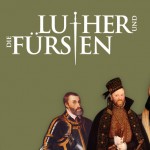 Luther und die Fürsten
Luther und die Fürsten
Schloss Hartenfels
Schloßstrasse 27
04860 Torgau
READ MORE:
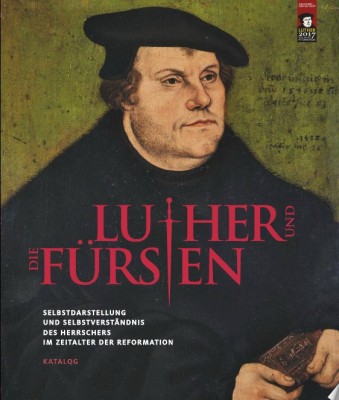 Luther und die Fürsten. Selbstdarstellung un dSelbstverständnis des Herschers im Zeitalter der Reformation. Vol. 1 – 2
Luther und die Fürsten. Selbstdarstellung un dSelbstverständnis des Herschers im Zeitalter der Reformation. Vol. 1 – 2
Ed. by Dirk Syndram, Yvonne Wirth and Iris Yvonne Wagner
Staatlichen Kunstsammlung Dresden, Sandstein Verlag 2015
ISBN 978-3-95498-160-1
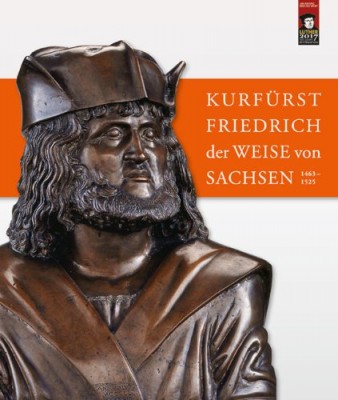 Kurfürst Friedrich der Weise von Sachsen (1463-1525): Beiträge zur wissenschaftlichen Tagung vom 4. bis 6. Juli 2013 auf Schloss Hartenfels in Torgau
Kurfürst Friedrich der Weise von Sachsen (1463-1525): Beiträge zur wissenschaftlichen Tagung vom 4. bis 6. Juli 2013 auf Schloss Hartenfels in Torgau
By Dirk Syndram, Yvonne Fritz, Doreen Zerbe(Eds.)
Sandstein Kommunikation 2014
ISBN-10: 3954981017
ISBN-13: 978-3954981014
The Elector, Frederick III of Saxony, called the Wise (1463-1525), was one of the most prominent of the German princes of the 16th. century. Under his rule, Saxony experienced a period of peace and prosperity as well as far-reaching social changes, which were caused by the work of Martin Luther and the Reformation. The 550th anniversary of Frederick the Wise’s birthday provided the occasion for a major international conference that took place in 2013 at Schloss Hartenfels in Torgau. The present volume, which focuses on the life-world of Frederick the Wise, holds papers presented at this conference.
 Friedrich der Weise: Kurfürst von Sachsen 1463-1525
Friedrich der Weise: Kurfürst von Sachsen 1463-1525
By Ingetraut Ludolphy
Leipziger Uni-Vlg 2007 (reprint)
ISBN-10: 3865831389
ISBN-13: 978-3865831385
 Die Religionspolitik Friedrichs II. von der Pfalz im Spannungsfeld von Reichs- und Landespolitik
Die Religionspolitik Friedrichs II. von der Pfalz im Spannungsfeld von Reichs- und Landespolitik
By Regina Baar-Cantoni
Kohlhammer 2011
ISBN-10: 3170220527
ISBN-13: 978-3170220522
Friedrich II of the Palatine (1482-1556) did not count as one of the ardent followers of the reformation; not event o those who were his most resolute opponents . His religious policy was for a long time dominated by his wish to balance between the new and the old faith, while trying to uphold the inner peace and the public order of the territories under his control. During his various diplomatic undertakings in the service of the Holy-Roman emperor and later as Elector – Kurfürst – it became clear that he, like many other of the German princes long hoped for a settlement reached though a national assembly or a general council
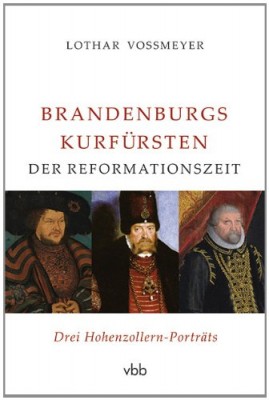 Brandenburgs Kurfürsten der Reformationszeit: Drei Hohenzollern-Porträts Gebundene
Brandenburgs Kurfürsten der Reformationszeit: Drei Hohenzollern-Porträts Gebundene
By Lothar Voßmeyer
Verlag für Berlin-Brandenburg 2014
ISBN-10: 3945256208
ISBN-13: 978-3945256206
FEATURED PHOTO:
View of the exhibition in Torgau summer 2015 – showing the preserved dress of the Saxon elector from 1580 – 1590 (exhibition no. 154)
